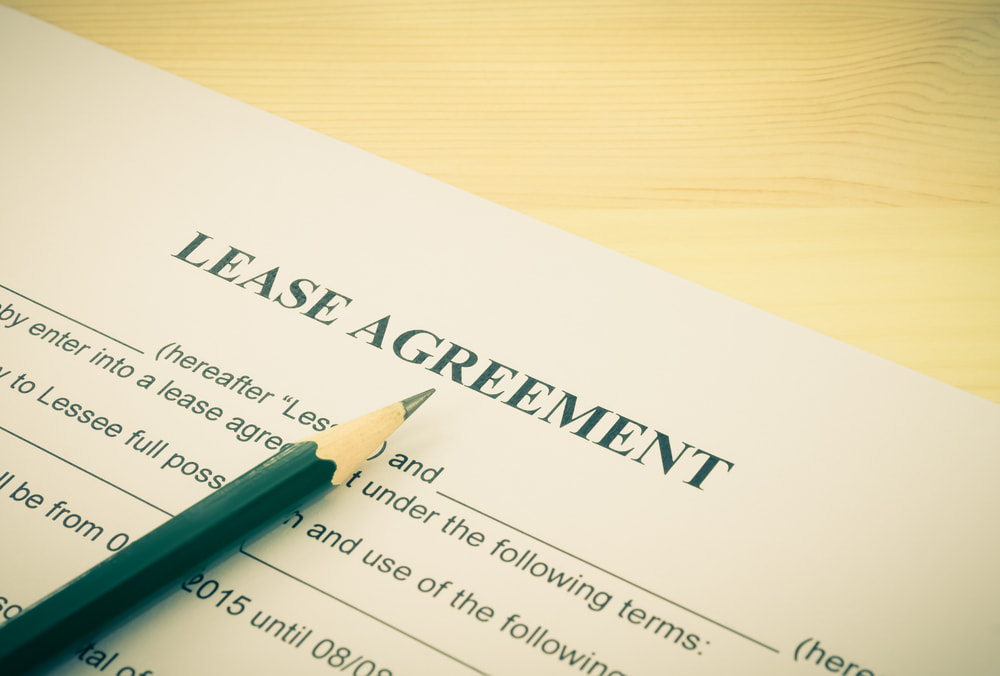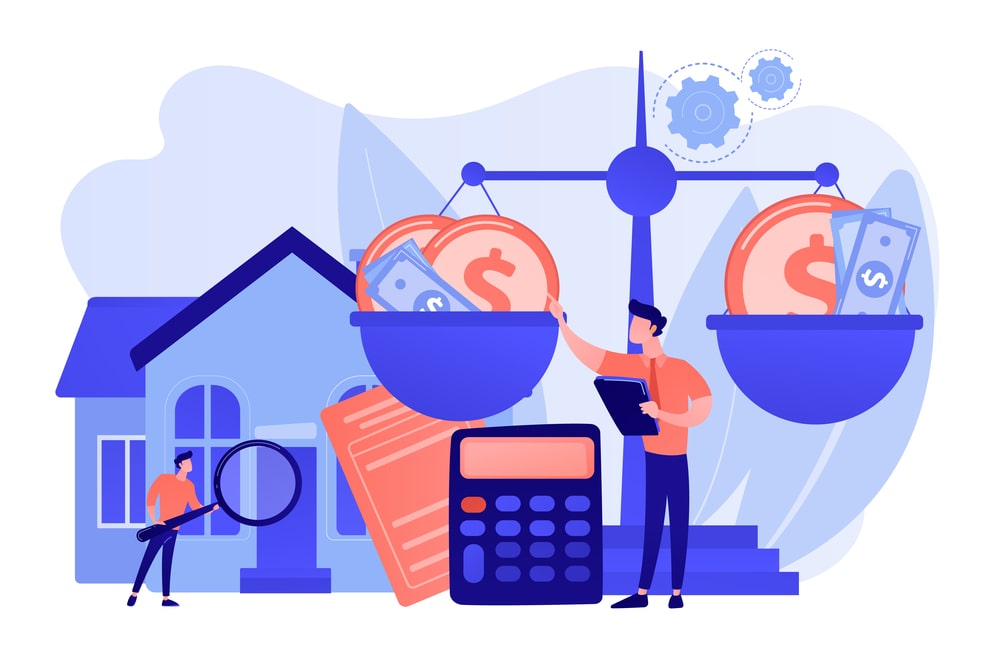If you’re familiar with residential leases, the process is pretty straightforward. Commercial leases are a whole different can of worms. Every deal is unique, and they all come with their own challenges.
That said, commercial leases fall into two broad categories: gross and net. Which type of lease you have will affect which expenses are paid by the tenant and which are paid by the landlord. Here’s everything you need to know about a gross lease, along with some of the differences between gross and net leases.
What Is A Gross Lease?
Under the terms of a gross lease, the tenant pays a single negotiated rental payment for the use of the property. The landlord is then responsible for other expenses, such as taxes, utilities, insurance, and maintenance.
Gross lease rent payments tend to be higher because the landlord pays for so many expenses. On the other hand, the tenant doesn’t have to worry about paying any other bills or getting hit with unexpected expenses. Under the right circumstances, a gross lease can be a huge benefit for both parties.
[ Thinking about investing in real estate? Register to attend a FREE online real estate class and learn how to get started investing in real estate. ]

How Does A Gross Lease Work?
A gross lease is a lease where the tenant can use the property in exchange for paying a single monthly fee. This fee is flat for the duration of the lease and does not fluctuate based on conditions. Gross leases are most commonly used for commercial properties like retail stores and office buildings, especially when multiple tenants occupy the same building.
Landlords will set the rent high enough that they can expect it to cover the building’s operating expenses. Among other costs, these can include:
-
Utilities
-
Insurance
-
Property taxes
-
Repairs and maintenance
-
Trash removal
-
Landscaping
-
Other amenities
Because these expenses can go up over time, landlords need to perform a proper analysis before agreeing to any rates. Historical energy price data, for example, can be used to help forecast future increases. It’s also common for tenants and landlords to reach special agreements about particular services. For example, an office building may cover janitorial services.
From the tenant’s perspective, gross leases make budgeting much more manageable. For instance instead of fluctuating utility bills, you’re paying the same exact amount every much. This means you can spend more time and effort on your core business, and less on financial management.
Types Of Gross Leases
There are two different types of gross lease: modified and full-service. Let’s take a quick look at both of them, and see what makes them different.
Modified Gross Lease
A modified gross lease has some of the characteristics of a gross lease, but the landlord does not cover all operating expenses. Instead, different provisions have been worked out between the landlord and the tenant for different expenses. Essentially, a modified gross lease balances a full-service gross lease and a net lease, where the tenant covers expenses.
The exact terms of a modified gross lease can be highly variable. There’s no one-size-fits all boilerplate that can tell you what to expect. In the end, the tenant and the landlord will each cover some expenses, including utilities, insurance, and property taxes. For example, the landlord might be responsible for janitorial services, while the tenant pays for their own utilities. These types of leases are most commonly used in shared commercial buildings, such as office buildings.
Full-Service Gross Lease
A full-service gross lease, sometimes just called a full-service lease or a gross lease, is a lease where the landlord covers all the property’s operating expenses. The exact expenses are still negotiable, but utilities, property taxes, and insurance costs are always covered. Common area maintenance is also almost always covered, as are other services like trash removal. There may be additional expenses, such as armed security or an on-site gym facility depending on the lease. Because the landlord pays for all these expenses, the tenant pays more in rent than they otherwise would.
Normally, there will be caps built into some of the expenses, particularly utility costs. This clause is known as an “expense ceiling,” which is the maximum amount of expenses that the landlord will cover. If a tenant exceeds the expense ceiling, they’re responsible for paying any of the excess costs. If your crypto mine is using 1.21 gigawatts of power per month, don’t expect your landlord to pay your entire electrical bill.
Like modified gross leases, full-service leases are most common for multi-tenant commercial buildings. It can be difficult to determine which business owes what portion of the expenses in these scenarios. For example, it’s not practical to have multiple meters on most office buildings. You wouldn’t be able to make even minor modifications to the floor plan without rewiring much of the building. As a landlord, it’s much more practical to roll that cost into the rent.
From a landlord’s perspective, the main benefit of a full-service lease is that you can charge more in rent. Of course, you’ll obviously be charging more to cover expenses. But in most cases, you’ll want to charge a bit extra, in case of unexpected increases. If no unexpected increases occur, that extra money goes back into your pocket. Alternatively, you could build an escalation clause into the lease. With an escalation clause, the rent will increase by a certain amount over time. This option is most often used on long-term leases, with an average annual increase of about 3%.
Then again, there are a few reasons you might not want to enter into a full-service lease. To begin with, you need to be more hands-on with how you manage your property. With a triple net lease, where the tenant pays all expenses, you just sit back and collect rent every month. When you’re the one paying the bills, you need to be much more engaged in maintenance, repairs, and other aspects of property ownership.
Another major drawback is that expenses could end up exceeding what you collect in payments. In that case, you’d end up losing money on your property. Then again, you can normally avoid this by building an expense ceiling clause into your lease agreement.

Pros & Cons Of A Gross Lease
No one type of contract is right for all circumstances. From both the landlord’s and the tenant’s perspective, there are upsides and downsides to gross leases. Here’s a quick overview.
For A Landlord
As a landlord, there are a number of upsides to a full service lease, as well as a couple potential pitfalls. These include:
Pros:
-
You can charge more for rent, potentially increasing your profits
-
With an escalation clause, you can pass on the costs of inflation to your tenants
Cons:
-
Unexpectedly high operational costs can cut into your profits
-
You need to invest more time in property management
For A Tenant
Tenants also need to think hard about what kind of lease they want to sign. While you’re pondering, keep these pros and cons in mind:
Pros:
-
Your occupancy costs are fixed, so you know how much to budget every month
-
You can focus on your business instead of spending time on property management
Cons:
-
Your rent goes up, sometimes by more than expensive
-
You’re dependent on your landlord for any maintenance needs
Gross Lease Vs. Net Lease
Before we conclude, let’s talk about the other major type of commercial lease: a net lease. This is basically the opposite of a gross lease, so tenants pay less rent, but are responsible for all or most of their operating expenses. As a result, a lot of the incentives are reversed, as are a lot of the pros and cons. For example, a landlord has little incentive to make energy-efficiency upgrades, since they’re not paying for utilities to begin with.
The most common net lease is a triple net lease, where the tenant is responsible for all operating expenses. That said, just like with gross leases, there are some modified versions. A good example of this is what’s called a “net of electric” lease. In this lease, the landlord would cover most operating expenses, but the tenant would pay their own power bill. There are three main types of net lease:
-
Single net leases: In this kind of lease, the landlord pays all expenses with the exception of property taxes, which the tenant pays for.
-
Double net leases: This is similar to a single net lease, but the tenant is also responsible for property insurance.
-
Triple net leases: This is the ultimate net lease. The landlord pays for none of the operating expenses. The tenant pays for utilities, maintenance, landscaping, insurance, and all other costs.
Summary
The difference between a gross lease is a net lease is simple. In a gross lease, the landlord pays for operating expenses, while in a net lease, the tenant does. But as you can see, there are actually a wide range of lease types with different expense-sharing arrangements. That’s why it’s important to do your due diligence and negotiate the right type of lease for your needs.
Ready to start taking advantage of the current opportunities in the real estate market?
Click the banner below to take a 90-minute online training class and get started learning how to invest in today’s real estate market!

